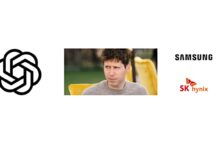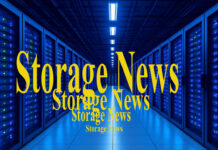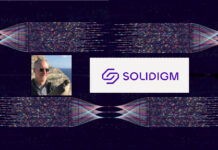AWS and the other top CSPs would like to migrate mainframe applications to their public clouds but many of these incredibly sticky apps tend to stay where they are. VirtualZ provides a halfway house, making mainframe data accessible to public cloud apps.
AWS Transform for Mainframe is a service that helps organizations move their old mainframe applications to AWS without having to rewrite everything from scratch. It scans mainframe COBOL, PL/I, JCL, and database definitions to understand how the mainframe app works. Next, it automatically converts that code into languages like Java, C#, or compatible AWS-native formats. It moves mainframe databases and files into AWS services like RDS or S3. Then it rebuilds and helps set up and test the converted applications on AWS infrastructure, finally running and managing the new apps.
That’s the theory, but the process may not result in a complete migration off the mainframe, and VirtualZ can help with bridging software. We discussed this with co-founder and CEO Jeanne Glass.
Blocks & Files: Tell me about the top four public clouds and mainframe data access and migration.

Jeanne Glass: All four major public clouds – AWS, Google Cloud, Microsoft Azure, and Oracle Cloud Infrastructure – have modernization strategies focused on bridging mainframe workloads with the cloud.
While each takes a different approach, the biggest common challenge remains data access: connecting high-value mainframe data securely to modern platforms. AWS leads with its Mainframe Modernization and AWS Transform for Mainframe initiatives.
Azure supports mainframe and midrange transformations through Azure Logic Apps and its Mainframe Transformation Service.
Google Cloud is expanding its Dual Run and AI-driven migration offerings, while OCI focuses on enterprise re-hosting and partner-driven migration frameworks.
VirtualZ works across all four – providing no-code, out-of-the-box connectivity between IBM Z, distributed and cloud environments to make data readily available for AI, analytics, and modernization.
Blocks & Files: Tell me more about AWS Transform for Mainframe. What is it for and what does it do?
Jeanne Glass: The genesis of AWS Transform traces back to AWS’s 2021 acquisition of Blu Age, a French software company specializing in model-driven code transformation. Blu Age’s modernization framework now forms the foundation of AWS Transform’s AI-based automation.
AWS Transform generates cloud-native, Java-based code. There’s an optional “Reforge” step that enhances the generated Java code for better readability, maintainability, and alignment with cloud DevOps practices. AWS Transform also supports Infrastructure as Code (IaC) templates for provisioning environments.

All in all, AWS Transform could slim down a mainframe-to-AWS cloud conversion process from years to months. It’s still a long time, and not all mainframe apps, especially the mission-critical ones, are being migrated, which means customers can have a hybrid mainframe-public cloud environment – which is where we can fit in.
Blocks & Files: How does VirtualZ work with AWS Transform for Mainframe?
Jeanne Glass: VirtualZ complements AWS Transform by addressing the data side of modernization. While Transform automates code analysis and refactoring, VirtualZ’s Lozen software operationalizes data access – allowing modernized COBOL or Java applications running on AWS to securely read and write live IBM Z datasets (such as VSAM) in real time, without replication or code changes.
Together, AWS and VirtualZ deliver a modernization pathway, from code transformation to live, hybrid data operations, without having completed migration off the mainframe. A VirtualZ blog discusses this.
AWS has also expressed interest in funding a direct Lozen connector for AWS Transform, similar to the existing Lozen integration with Rocket Enterprise Server. That connector would allow Transform-modernized workloads to access mainframe data in real time – completing the modernization loop from code to data to cloud.
Blocks & Files: Do Google, Azure, and OCI have equivalent services to AWS Transform for Mainframe? If so, is VirtualZ working with them?
Jeanne Glass: Each major cloud has its own modernization initiative, but none yet match the AI-driven automation of AWS Transform for Mainframe.
- Google Cloud offers Dual Run and migration frameworks leveraging its AI/ML stack.
- Azure provides modernization services and partner-led programs for host transformations.
- OCI continues to strengthen enterprise modernization through its Mainframe Modernization Service.
VirtualZ is cloud-agnostic and actively supports integration with all of them. Our platform works consistently across AWS, Azure, Google Cloud, and OCI to enable governed, no-code access to mainframe data by applications in these clouds.
Blocks & Files: Is VirtualZ seeing a need to respond to the surge of interest in GenAI, LLMs, and agents? What needs are emerging in its customer base?
Jeanne Glass: Yes. The rise of GenAI and LLMs has made secure, governed access to enterprise data a top priority. Customers increasingly want to leverage operational and historical data – especially from mainframes – to train AI models, generate insights, and automate business processes. The challenge is providing that data to AI systems without compromising compliance or performance.
Blocks and Files: How is VirtualZ planning to respond?
Jeanne Glass: We see two clear opportunities.
- Integrating with the GenAI ecosystem: enabling AI and agentic systems to request only the precise mainframe data they need—live, secure, and in native format—without replication.
- Embedding AI within our software: using AI-driven inference to automatically interpret complex mainframe structures (such as SMF, RACF, or COBOL copybooks) and generate the metadata or parsers needed to make that data usable by modern platforms.
Our long-term vision is to evolve from making data available to making it understandable—reducing human effort in data discovery, preparation, and integration for GenAI, LLMs, and intelligent agents.
Bootnote
Blu Age software converted applications written in languages such as COBOL, PL/I, NATURAL, RPG/400, and COBOL/400 into Java services and web frameworks.








